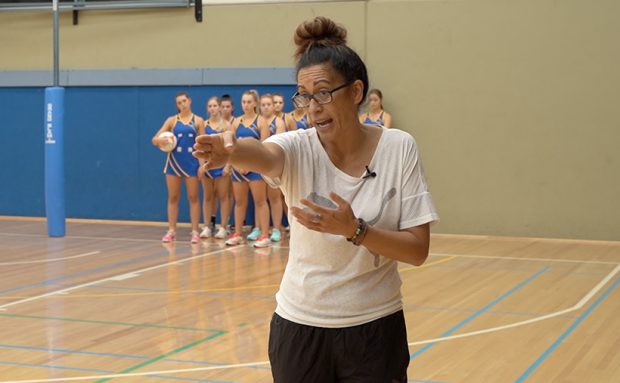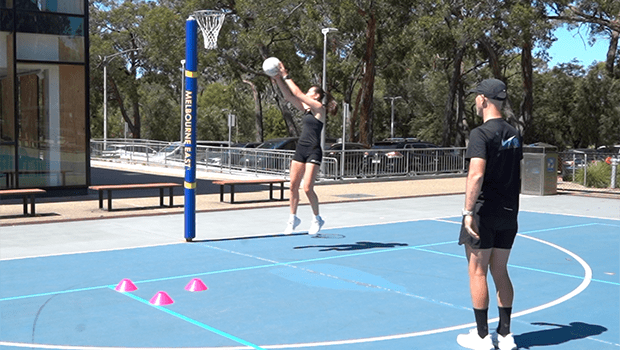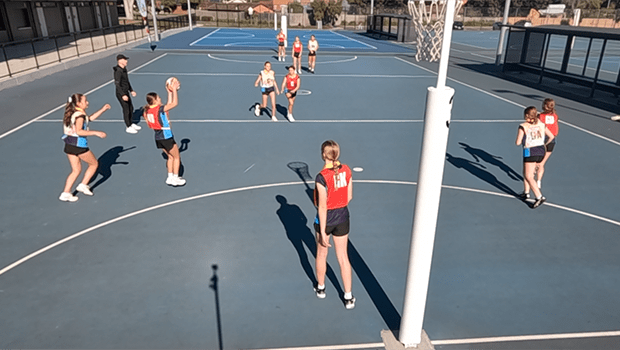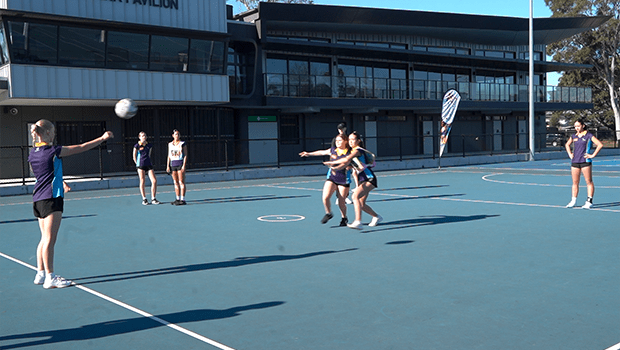It’s always interesting when a coach of a junior team says “we’ve been working on our zone/press”, or sings the praises of their players for the number of turnovers they were able to achieve by setting up a defensive zone.
That’s all well and good, but almost invariably when you watch that team play, their “zone” works nothing like what a true defensive zone should be: a living, breathing, cohesive organism that moves and responds as a whole, rather than a number of singular, disparate parts.
In our experience, it’s incredibly rare – if not impossible – to get the required level of understanding of a zone from players in 13/U and 15/U teams.
400+ DRILLS: REGISTER NOW TO ACCESS ALL OF OUR VIDEOS!
More often than not, young players setting up a zone know roughly where they should be standing, and if the ball happens to be thrown in their direction they know they should have a go at it, but the majority of the time they’re successful in gaining a turnover only because that particular opposition just doesn’t quite have the skills or the composure to execute a couple of quick passes to work their way through it.
Against a good team with better skilled players, the same zone is very quickly chopped up and scored heavily against.
For every young player who truly understands a zone structure, there’s countless more who don’t, and it only takes one player not fulfilling their role for the whole thing to break down. Even at state league level, coaches have ongoing challenges with players understanding the structure of a zone and their role within it.
And young players dropping back into a zone as their default tends to breed defensive laziness, when in truth a zone should be just as taxing and challenging as tight one on one.
What’s so hard about a zone?
Let’s consider what it takes to set up a zone: an advanced level of cohesion, understanding and teamwork between a group of players.
For example, if it’s a “four” or “box” in the defensive third, the midcourters at the front need to be able to react quickly to where the ball is on every single pass, while also attempting to prevent short passes in front of them, and also responding to calls from the defenders behind them to shut down goalers driving up the middle.
Meanwhile at the back, the defenders are constantly repositioning to put themselves in the best position to attempt an intercept on any high or long passes, while also reacting to goaler movements and trying not to get stuck on the body of taller goalers.
And all of these movements and adjustments are happening at least every couple of seconds. All it takes is one player not quite reacting quickly enough, or forgetting where they should be positioned, and the whole structure falls apart.
When should I coach a zone, then?
Most of Australia’s state netball bodies recommend a zone as a skill requirement only once players are 17 years or older.
It’s at that age that many players have become competent enough with their one on one defence and are more capable of reading the play, and can start thinking about defending a space, rather than just worrying about their own player.
We’ve begun teaching zone concepts to very advanced 15/U players in the past, but only because they had an exceptional understanding for their age and were able to grasp the concept.
What should I coach instead?
So what can you do rather than jumping straight into teaching your players a zone?
ONE ON ONE
In our opinion, coaches of younger teams are better served devoting the majority of the time spent on defensive skills to one on one techniques.
It’s amazing how many players have poor one on one defensive skills as they move through the grades and age groups, and are then exposed by better-skilled players at higher levels.
There’s still a certain amount of one on one defence in a zone, so it’s crucial that players can first cover an opponent themselves before thinking about working within a set defensive structure.
TEAMWORK
While a full zone can wait, there are still plenty of opportunities to introduce skills and concepts that will help players in other areas of their netball and will also assist them when it comes time to learn a zone.
In the goal circle, things like communicating and switching players are skills that young players can begin to develop that will be very much applicable and useful once they begin working within a zone.
For midcourters, stepping up to shut down short passes, as well as communicating and switching opponents defensively in the goal third, are basics that are great places to start.
INTERCEPTING
It almost goes without saying that zones are set up to allow players to create turnovers by intercepting the ball.
So perfecting the skill of leaving your own opponent to intercept a pass, or simply creating an intercept by positioning well to prevent a pass to your opponent, are all excellent things to practice.
THREE-OUT/WALL
A “three-out” or “wall” strategy on a defensive centre pass? Absolutely.
Yes, it’s a space-based defensive structure, but it does have one on one elements, and each player’s role is also clearly defined so that it’s easy for them to understand why they’ve been successful or unsuccessful each time.





